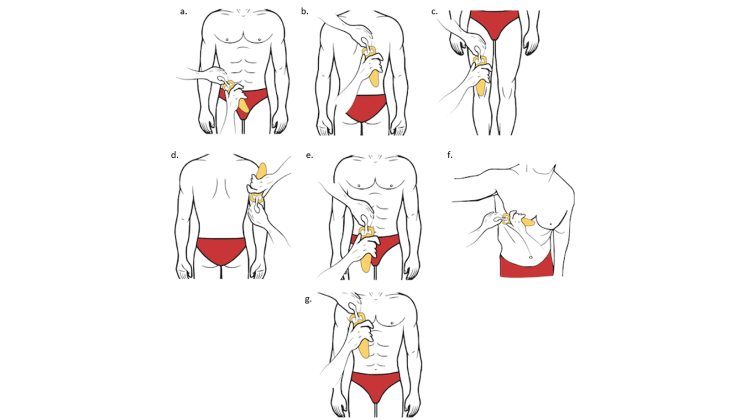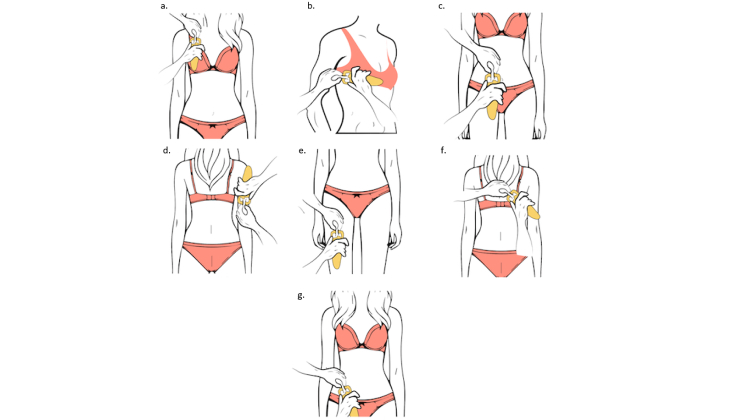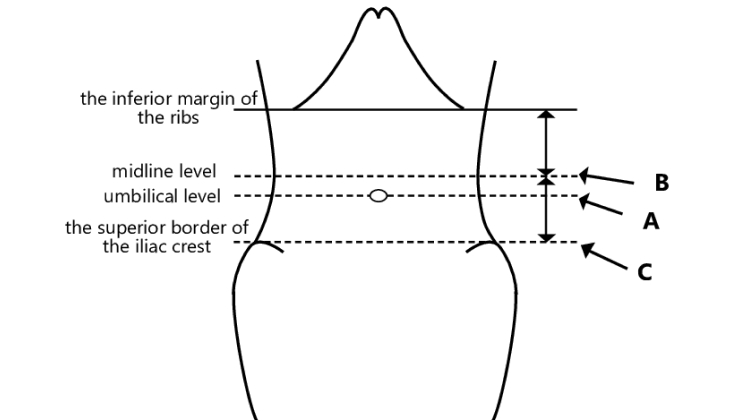 Expert's opinion
Expert's opinion
Expert's opinion
The article is a subjective view on this topic written by writers specializing in medical writing.
It may reflect on a personal journey surrounding struggles with an illness or medical condition, involve product comparisons, diet considerations, or other health-related opinions.
Although the view is entirely that of the writer, it is based on academic experiences and scientific research they have conducted; it is fact-checked by a team of degreed medical experts, and validated by sources attached to the article.
The numbers in parenthesis (1,2,3) will take you to clickable links to related scientific papers.
Body Recomposition 2024: Can We Lose Fat & Gain Muscle Simultaneously?

Everybody wants to lose weight but nobody wants to just look skinny. We want our bodies shapely, but we know that to get our body shape perfectly we need to gain muscle at the same time.
Yes, this is the definition of “body recomposition”. Losing fat and gaining muscle in a healthy way can only be done by combining diet with exercise.
In this guide, we will discuss where you should pay attention for ideal body recomposition, how to observe your body change, as well as diet and exercise strategies.
Can We Lose Fat & Build Muscle At The Same Time?
The quick answer is yes, we can. But there are important strategies to lose weight while gaining muscle.
First of all, you need to know that body fat doesn’t transform into muscle, a big mistake many people make. Your adipose tissue and muscle tissue work separately but in association with each other.
We’re built to run on the energy we gain from our diets. However, when your energy needs increase and enough calories don’t come in to support those demands, your body starts to release energy from its own stores.
The first store is glycogen storage, inside of muscles and liver. After depleting glycogen storage, the body starts to use adipose tissue, the biggest energy storage, to get energy.
However, if you don’t strike a good balance with the energy cycle, the increased needs lead the body may convert into catabolism, which includes muscle breakdown.
There are several principles to increase muscle mass while decreasing body fat: what is called “Body recomposition”.
What Is Body Recomposition Meaning?
Body Recomposition is a principle for healthy toning of the body: we want to decrease body fat while increasing muscle mass.
So, the numbers on the scale aren’t very important as long as you increase muscle mass, because increased muscles add to the scale. How do we measure body fat rather than weight?
Measurements Of Body Fat
Monitoring of body recomposition can be done with a protocol that involves measurements of body fat and muscle mass. A simple scale is useless unless you have a scale that shows body fat, muscle ratio, etc.
Such a scale uses biometrical impedance[1] to differentiate the fat from other tissue; this scale is very expensive. This method, using dual-energy x-ray absorptiometry (DXA), however, is the gold standard for determining body composition. The expensive instrument means it can only be found in large centers and won’t be a part of your daily life.
However, there are several basic measurement methods–” anthropometric measurements” whose results correlate[2] with DXA measurements.
Skinfold thickness[3] and waist circumference[4] are the main measurements to determine body fat composition this way.
Skinfold Thickness
As an easy body fat measurement method, the body fat estimation via skinfold thickness showed a significant correlation with DEXA measurements[5]. You can measure your skinfold thickness by using a “caliper,” which is a cheap anthropometric tool.
Here are the main 7 skinfold measurements to calculate body fat:


By using these measurements you can easily calculate your percentage of body fat and your body density with the following Jackson & Pollock equations:
4-Site Skinfold Equation (abdominal, triceps, thigh and suprailliac) for females:
% Body Fat = (0.29669 x sum of skinfolds) – (0.00043 x square of the sum of skinfolds) + (0.02963 x age) + 1.4072
7-Site Skinfold Equation (chest, axilla, tricep, subscapular, abdominal, suprailiac, thigh) for females:
Body Density = 1.112 – (0.00043499 x sum of skinfolds) + (0.00000055 x square of the sum of skinfold sites) – (0.00028826 x age)
4-Site Skinfold Equation (abdominal, triceps, thigh and suprailliac) for males:
% Body Fat = (0.29288 x sum of skinfolds) – (0.0005 x square of the sum of skinfolds) + (0.15845 x age) – 5.76377
7-Site Skinfold Equation (chest, axilla, tricep, subscapular, abdominal, suprailiac, thigh) for males:
Body Density = 1.112 – (0.00043499 x sum of skinfolds) + (0.00000055 x square of the sum of skinfold sites) – (0.00028826 x age)
Waist Circumference, Waist/Height Ratio and Waist/Hip Ratio
Waist circumference[6] is commonly suggested to measure body fat rather than weight scaling. You can easily monitor your abdominal fat by regularly measuring your waist circumference.
Also, the waist/hip circumference[7] ratio gives an important idea about health risks. Waist/Height ratio is also found to be an effective tool[8] for determining cardiometabolic risk because metabolic syndrome[9] is partly defined by these disproportionate ratios.

Waist circumference should be measured from the midline between the ribs and the iliac crest. It should be lower than 80 cm for women and 94 cm for men, to lower metabolic risk[11].
These measurement tools can be used to observe changes in the body’s recomposition before and after.
The Ultimate Guide To Body Recomposition
Cardio training while realizing a calorie deficit is essential for losing weight. But if increasing muscle mass is your goal, this is not enough. Strength training[12] is the key point of body recomposition to increase muscle mass.
Also, avoiding muscle weight loss requires your diet to support the muscles with high protein and essential amino acid content.
But how to do a body recomposition? We can examine this process under two steps, that is, diet and exercise.
Healthy And Functional Body Recomposition Diet
There are many diet strategies for weight loss and muscle gain and all of them have some advantages and disadvantages.
However, the fundamental concept is increasing the protein level of the diet. When you eat healthy, whole-food, high fiber, high vitamin and mineral sources, even a moderately increased protein diet is beneficial for increasing muscle mass.
It is a scientific fact that increased serum and muscular cell amino acid content stimulates muscle protein synthesis[13]–the way muscles are built.
Body recomposition calories should be moderately decreased to stimulate fat loss, but since excessive calorie restriction reduces muscle mass, too, the increase in protein is crucial to prevent this.
The protein type is also an important factor to support muscles. Anabolic signaling[13] of muscle cells is needed to increase muscle mass.
The body recomposition meal plan should include all essential macronutrients (“macros”) to support muscle gain while losing body weight.
Body Recomposition Macros
Protein
For muscle gain, daily protein intake[14] should be 1,4-2 g/kg at least. Higher protein intake (> 3.0 g protein/kg) combined with resistance exercise benefits muscle gain.
Among these proteins, 0.25g/kg should come from high-quality protein sources (egg, milk, yogurt, seafood, meats, soy, nuts and seeds, and spirulina).
Leucine is essential to avoid muscle loss, as well as supportive amino acids for muscle gain. Daily 700-3000 mg of leucine added to other essential amino acids can help to build muscle.
It is better to distribute protein intake equally, every 3-4 h, during the day. The optimal time to ingest protein is pre- or post-workout.
The most effective protein intake for muscle gain is rapidly digested proteins with high proportions of essential amino acids and adequate leucine.
It is also suggested that it is better to get your macro needs from a dietary source; however, supplements can be used if you can’t get the suggested amounts with your diet, especially for protein.
Carbs
It should be appreciated that adequate carbohydrate intake promotes muscle gain in addition to protein; also, carbs may help to offset muscle damage by promoting recovery.
To lose body fat, it is essential to decrease carbohydrates; however, an essential amount of carbs is needed.
Fat
During dietary fat intake, attention should be paid to healthy fat alternatives–especially the antioxidant capacity and healthy fatty acid content of oil sources like olive oil, nuts, and avocado.
Remember that since fat sources provide high calories, it is important to indulge in only a limited intake.
Since the body recomposition diet provides an increase in protein especially, the calorie gain from protein should be balanced by keeping carbohydrates and fats limited.
Removing foods such as simple sugars, saturated and trans fats, and processed foods from the diet, which directly stimulate weight gain, is indispensable for this process.
The basic body recomposition calculator websites give the daily calorie amount according to your weight and height, but they are not very accurate applications. As mentioned above, the fat mass should be measured with skinfold or waist & hip circumferences rather than body mass index (BMI).
Similarly, the body recomposition macros calculator isn’t going to be very beneficial without asking for help from a professional. Another consideration is that body recomposition calorie calculators cannot accurately estimate your daily energy expenditure.
Perhaps a better option is getting help from mobile apps to monitor your eating and exercise habits. Also, some beneficial effects of supportive supplements to lose weight have been demonstrated, and these kinds of products can be helpful under the control of health professionals.
Body Recomposition Exercise
Skeletal muscle is an adaptive tissue navigating mechanical stress. Mechanical stress is created by strength exercises. Continuous mechanical loading contributes to muscle production[15], while a reduction in strength training causes muscle loss.
The effects of resistance training differ[16] according to the total volume and load applied to the muscle, the time the muscle is in tension[16], the speed of the contraction forces created, and the duration.
So, the bodybuilding recomposition plan should include a variety of strength[17] and cardio[18] exercises. You can find the main principles[19] of exercise to muscle gain online.
The focus on the desired muscle function to be supported can be changed and modulated during the body recomposition workout plan.
For Strength Heavier Weights
The strength of the muscles can be enhanced with heavier muscle loads in a dose-dependent manner. Training with heavier weights and fewer repeats (1-5 repeats), depending on the person’s physiology, increases muscle strength.
For Hypertrophy Moderate Weights
Moderate weight load with training volume (8-12 repeats) is needed to increase muscle fiber volume. Evidence shows that fiber type-specific differences are seen within a range of moderate loading.
For Endurance Lighter Weight
Muscular endurance can be increased from lighter muscle loads with increased repeats (15-20 rep).
Body recomposition strategies for males and females may differ due to the baseline muscle mass and physiological differences. Body recomposition workout plans for females include more repeats with less heavy weights; however, men generally train with as much weight as they can, with fewer repeats.
Especially for females, the exercise timing was suggested to be 3-4 sets per exercise, on 2-4 training days per week, for upper body strength according to the meta-analysis results[20].
Lower body strength in women can be achieved with various combinations of protocols, although the frequency and total weekly volume are a priority.
The Bottom Line
Considerations for the body recomposition plan can be summarized as
- Moderate calorie deficit
- Increased protein intake
- Moderately reduced carbohydrate intake
- Strength exercises arranged according to the desired muscle function
A balanced and nutritious diet should be followed in order not to weaken the body and to meet the needs of the muscles. A balanced diet with antioxidant and anti-inflammatory content prevents wear and tear that may occur during exercise, as well as promotes recovery.
It will not take long to see body recomposition results with a combination of diet and exercise.
+ 20 sources
Health Canal avoids using tertiary references. We have strict sourcing guidelines and rely on peer-reviewed studies, academic researches from medical associations and institutions. To ensure the accuracy of articles in Health Canal, you can read more about the editorial process here
- Nichols, J., Going, S., Loftin, M., Stewart, D., Nowicki, E. and Pickrel, J. (2006). Comparison of two bioelectrical impedance analysis instruments for determining body composition in adolescent girls. International journal of body composition research, [online] 4(4), pp.153–160. Available at: https://www.ncbi.nlm.nih.gov/pmc/articles/PMC1905857/.
- Gonçalves, E.M., Silva, A.M., Santos, D.A., Lemos-Marini, S.H.V., de Oliveira Santos, A., Mendes-dos-Santos, C.T., De-Mello, M.P. and Guerra-Júnior, G. (2012). Accuracy of anthropometric measurements in estimating fat mass in individuals with 21-hydroxylase deficiency. Nutrition, [online] 28(10), pp.984–990. doi:10.1016/j.nut.2011.12.014.
- Ashby-Thompson, M., Chung, S. and Gallagher, D. (2021). Body composition. Reference Module in Food Science. [online] doi:10.1016/b978-0-12-821848-8.00011-1.
- Flegal, K.M., Shepherd, J.A., Looker, A.C., Graubard, B.I., Borrud, L.G., Ogden, C.L., Harris, T.B., Everhart, J.E. and Schenker, N. (2008). Comparisons of percentage body fat, body mass index, waist circumference, and waist-stature ratio in adults. The American Journal of Clinical Nutrition, [online] 89(2), pp.500–508. doi:10.3945/ajcn.2008.26847.
- Kuo, F.-C., Lu, C.-H., Wu, L.-W., Kao, T.-W., Su, S.-C., Liu, J.-S., Chen, K.-C., Chang, C.-H., Kuo, C.-C., Lee, C.-H. and Hsieh, C.-H. (2020). Comparison of 7-site skinfold measurement and dual-energy X-ray absorptiometry for estimating body fat percentage and regional adiposity in Taiwanese diabetic patients. PLOS ONE, 15(7), p.e0236323. doi:10.1371/journal.pone.0236323.
- Ross, R., Neeland, I.J., Yamashita, S., Shai, I., Seidell, J., Magni, P., Santos, R.D., Arsenault, B., Cuevas, A., Hu, F.B., Griffin, B.A., Zambon, A., Barter, P., Fruchart, J.-C., Eckel, R.H., Matsuzawa, Y. and Després, J.-P. (2020). Waist circumference as a vital sign in clinical practice: a Consensus Statement from the IAS and ICCR Working Group on Visceral Obesity. Nature Reviews Endocrinology, [online] 16(3), pp.177–189. doi:10.1038/s41574-019-0310-7.
- Ibrahim, Q. and Ahsan, M. (2019). Measurement of Visceral Fat, Abdominal Circumference and Waist-hip Ratio to Predict Health Risk in Males and Females. Pakistan Journal of Biological Sciences, [online] 22(4), pp.168–173. doi:10.3923/pjbs.2019.168.173.
- Ashwell, M., Gunn, P. and Gibson, S. (2011). Waist-to-height ratio is a better screening tool than waist circumference and BMI for adult cardiometabolic risk factors: systematic review and meta-analysis. Obesity Reviews, [online] 13(3), pp.275–286. doi:10.1111/j.1467-789x.2011.00952.x.
- Moore, J.X., Chaudhary, N. and Akinyemiju, T. (2017). Metabolic Syndrome Prevalence by Race/Ethnicity and Sex in the United States, National Health and Nutrition Examination Survey, 1988–2012. Preventing Chronic Disease, [online] 14. doi:10.5888/pcd14.160287.
- Lemoncito, M.V., Paz-Pacheco, E., Mary Anne Lim-Abrahan and Cherry Mae Sison (2010). Impact of Waist Circumference Measurement Variation on the Diagnosis of Metabolic Syndrome. [online] ResearchGate. Available at: https://www.researchgate.net/publication/265570880_Impact_of_Waist_Circumference_Measurement_Variation_on_the_Diagnosis_of_Metabolic_Syndrome.
- Mike, H. (2016). A clinical perspective of obesity, metabolic syndrome and cardiovascular disease – Thang S Han, Mike EJ Lean, 2016. [online] JRSM Cardiovascular Disease. Available at: https://journals.sagepub.com/doi/10.1177/2048004016633371.
- Ribeiro, A.S., Oliveira, A.V., Witalo Kassiano, Matheus, Mayhew, J.L. and Edilson Serpeloni Cyrino (2022). Effects of resistance training on body recomposition, muscular strength, and phase angle in older women with different fat mass levels. [online] 35(2), pp.303–310. doi:https://doi.org/10.1007/s40520-022-02313-7.
- Pasiakos, S.M. (2012). Exercise and Amino Acid Anabolic Cell Signaling and the Regulation of Skeletal Muscle Mass. Nutrients, [online] 4(7), pp.740–758. doi:10.3390/nu4070740.
- Jäger, R., Kerksick, C.M., Campbell, B.I., Cribb, P.J., Wells, S.D., Skwiat, T.M., Purpura, M., Ziegenfuss, T.N., Ferrando, A.A., Arent, S.M., Smith-Ryan, A.E., Stout, J.R., Arciero, P.J., Ormsbee, M.J., Taylor, L.W., Wilborn, C.D., Kalman, D.S., Kreider, R.B., Willoughby, D.S. and Hoffman, J.R. (2017). International Society of Sports Nutrition Position Stand: protein and exercise. Journal of the International Society of Sports Nutrition, [online] 14(1). doi:10.1186/s12970-017-0177-8.
- Europe PMC (2016). Europe PMC. [online] Europepmc.org. Available at: https://europepmc.org/article/med/128681.
- Burd, N.A., Holwerda, A.M., Selby, K.C., West, D.W.D., Staples, A.W., Cain, N.E., Cashaback, J.G.A., Potvin, J.R., Baker, S.K. and Phillips, S.M. (2010). Resistance exercise volume affects myofibrillar protein synthesis and anabolic signalling molecule phosphorylation in young men. The Journal of Physiology, [online] 588(16), pp.3119–3130. doi:10.1113/jphysiol.2010.192856.
- Krzysztofik, M., Wilk, M., Wojdała, G. and Gołaś, A. (2019). Maximizing Muscle Hypertrophy: A Systematic Review of Advanced Resistance Training Techniques and Methods. International journal of environmental research and public health, [online] 16(24), p.E4897. doi:10.3390/ijerph16244897.
- Wewege, M., van den Berg, R., Ward, R.E. and Keech, A. (2017). The effects of high-intensity interval training vs. moderate-intensity continuous training on body composition in overweight and obese adults: a systematic review and meta-analysis. Obesity Reviews, [online] 18(6), pp.635–646. doi:10.1111/obr.12532.
- Krzysztofik, Wilk, Wojdała and Gołaś (2019). Maximizing Muscle Hypertrophy: A Systematic Review of Advanced Resistance Training Techniques and Methods. International Journal of Environmental Research and Public Health, [online] 16(24), p.4897. doi:10.3390/ijerph16244897.
- Hagstrom, A.D., Marshall, P.W., Halaki, M. and Hackett, D.A. (2019). The Effect of Resistance Training in Women on Dynamic Strength and Muscular Hypertrophy: A Systematic Review with Meta-analysis. Sports Medicine, [online] 50(6), pp.1075–1093. doi:10.1007/s40279-019-01247-x.



